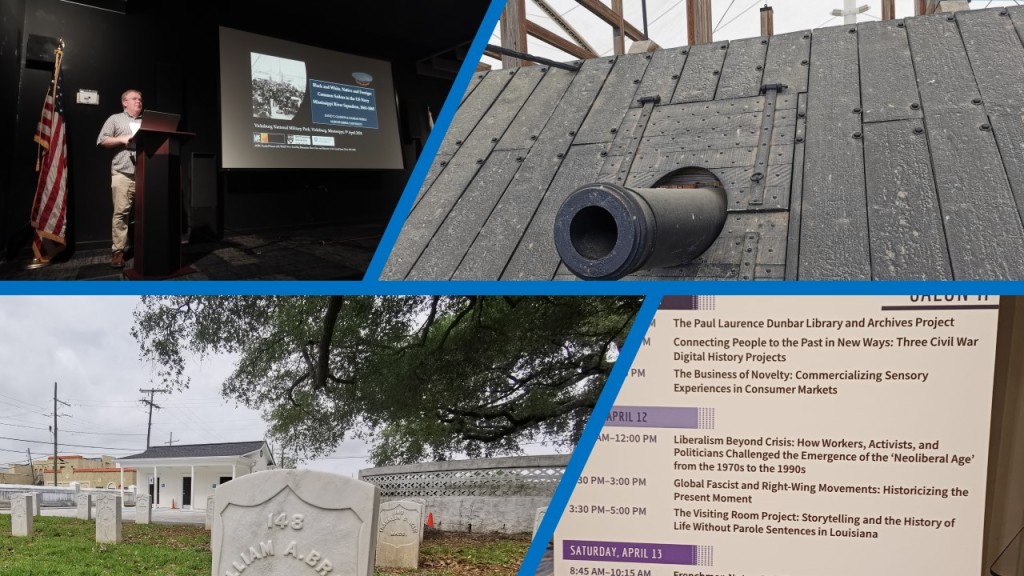Sharing both the findings and the methodologies of the Civil War Bluejackets Project on an ongoing basis is a major goal of our work. To that end, we have just completed a series of talks, together with some research during a whirlwind few days along the Mississippi River. ‘Ol Man River plays an important role in our research, given so many U.S. Navy sailors served there- including many African American men who enlisted having escaped bondage. In April we gave a series of talks on the work of the project, at Louisiana State University in Baton Rouge, at Vicksburg National Military Park, and the Organization of American Historians Conference in New Orleans. Along the way we also took some time to do some new research and visit sites associated with the U.S. Navy. Below are some images (and some of the details) of our visit.
Baton Rouge
Our first stop on 8th April was at Louisiana State University, Baton Rouge, where we spoke The Civil War Bluejackets Project: Citizen Science, Data Science and the Civil War U.S. Navy (many thanks to Professor Aaron Sheehan-Dean for the invitation and his hospitality!). The talk focused on the contributions of Citizen Scientists to the project, and the methodologies we are employing both on Zooniverse and with using Computer Science.
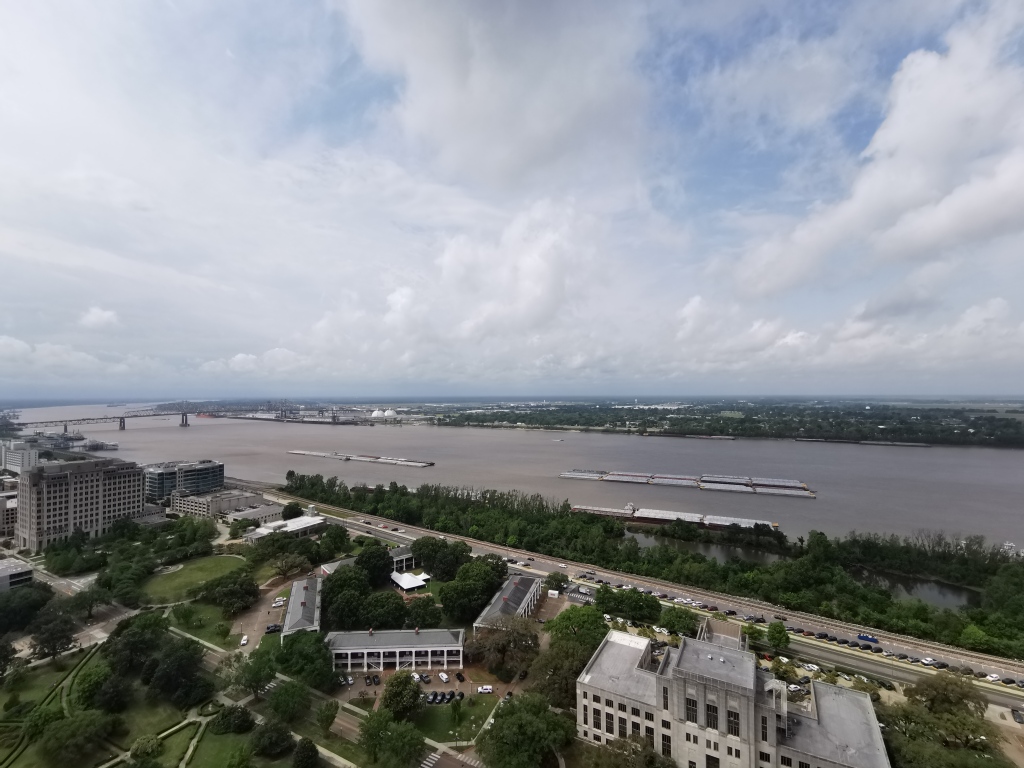

Vicksburg
On 10th April we made our way to Vicksburg, Mississippi, the “Gibraltar of the Confederacy.” The City finally fell to U.S. forces on 4th July 1863 after long months of campaigning. The Mississippi Squadron played a vital role in operations against the city, and we spoke at the National Military Park about the men who served in the fleet. The presentation was titled Meet the Bluejackets: Exploring the Lives of Immigrant and African American Sailors in the U.S. Navy Mississippi River Squadron, and we took the opportunity to have a “hands on” element with the audience, exploring a muster sheet page from the famed ironclad USS Cairo, and some of the men who served aboard her (of which more in a later post). It was particularly moving for us to see the remains of USS Cairo there. She sank when she struck a Confederate torpedo on the Yazoo River in December 1862, and was raised a century later. Today she represents the most important ironclad survival from the American Civil War.


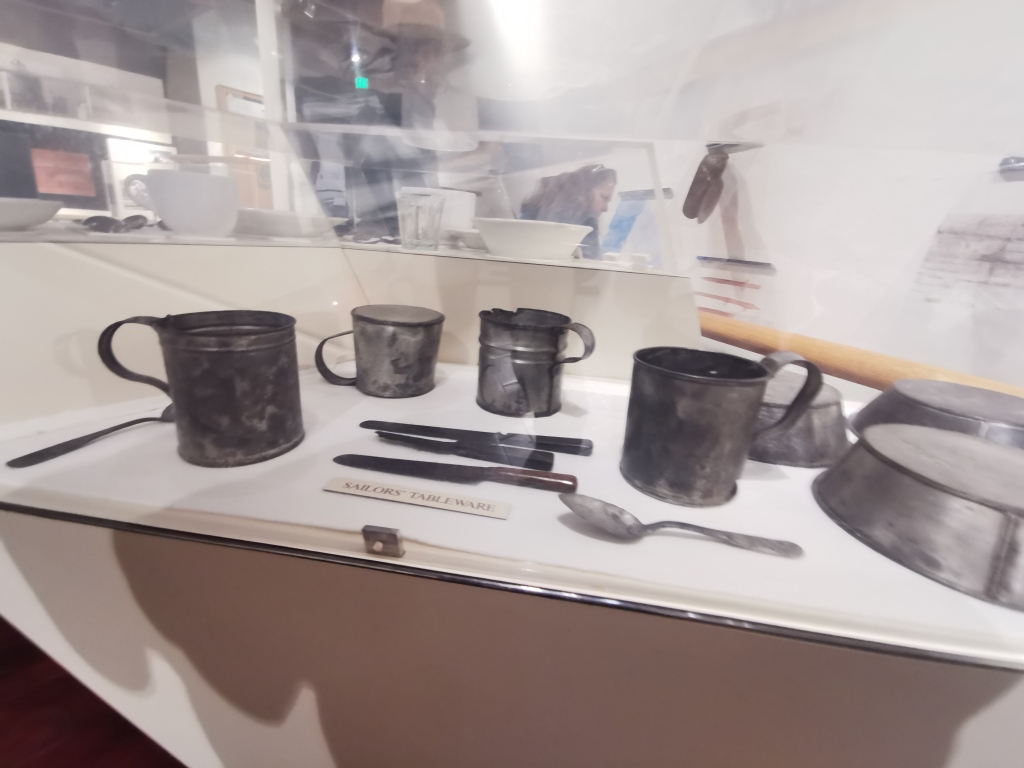

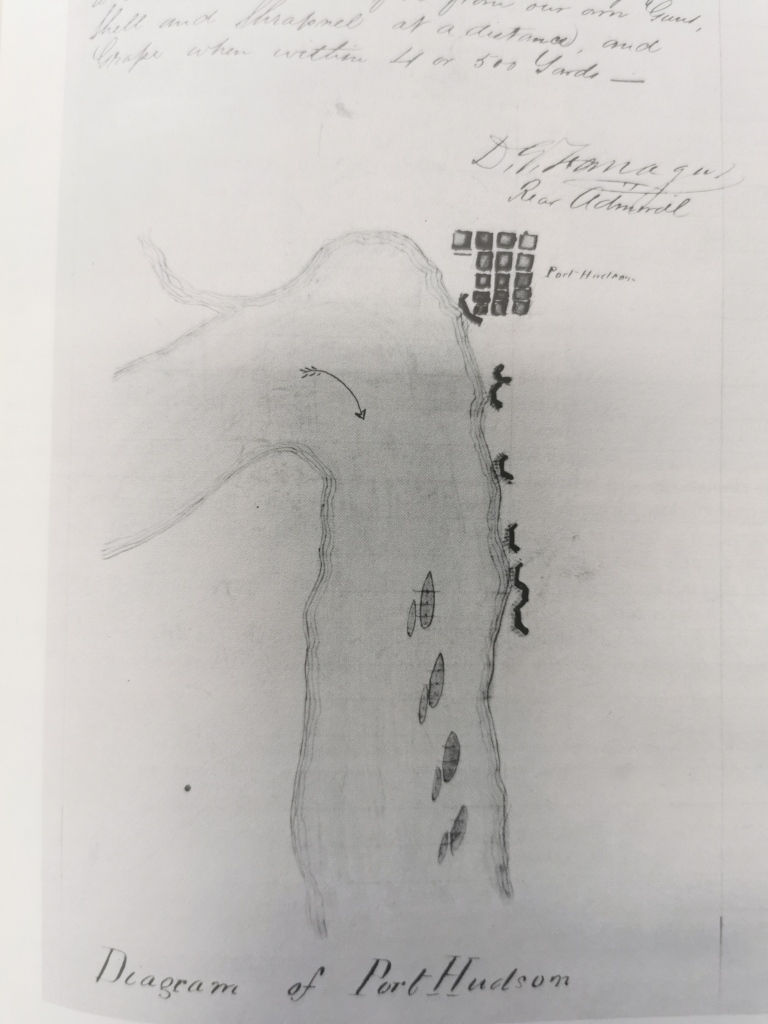
New Orleans
Our final stop was at New Orleans for the 2024 Organization of American Historians Conference. On the 11th April we were part of a panel entitled Connecting People to the Past in New Ways: Three Civil War Digital History Projects. Our paper was Civil War Bluejackets: Telling the Macro and Micro Stories of the Common Sailor through Big Data. We were fortunate in the session to have an opportunity to engage with and consider the work of a number of notable digital projects. We shared the panel with Dr Susannah Ural and Dr Lindsey Peterson, who drew on their work on The Civil War & Reconstruction Governors of Mississippi Project to discuss free digital archives and reaching marginalized audiences, and with Dr Paul Quigley and Dr KT Shively of the Experiencing Civil War History through Augmented Reality Project, who explored the opportunities and challenges of their work at Pamplin Historical Park in Virginia. Insightful and thought-provoking comments were provided by Dr Anne Sarah Rubin and Dr Hilary Green.

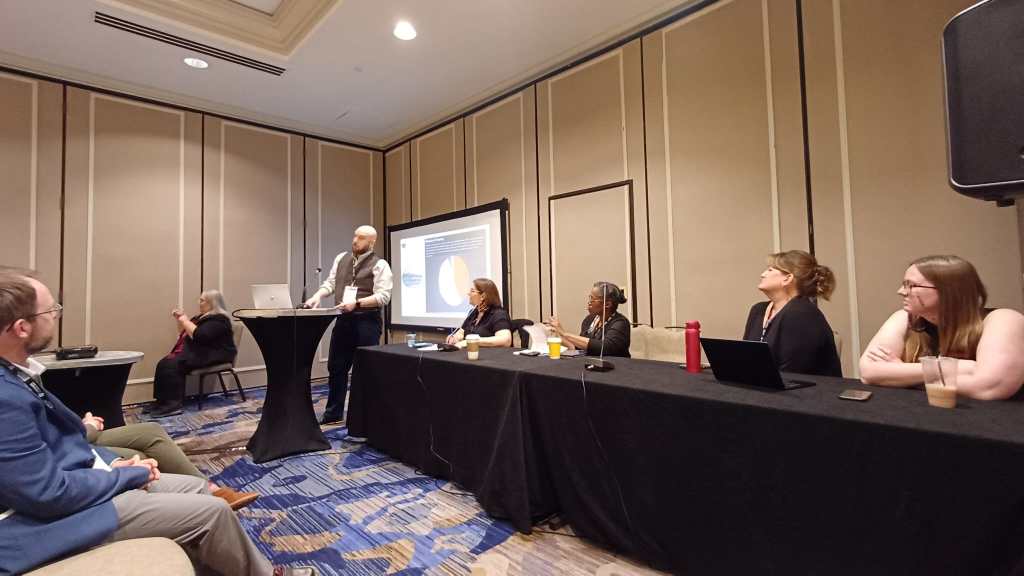
Although a whirlwind trip, it was great to get the opportunity to share and discuss the work of the Bluejackets Project and it’s dedicated Citizen Scientists with different audiences and at different venues, particularly as we move towards the commencement of Phase 2 (for more on that, see here). We learned a lot from the trip. Remember, if you are interested in keeping up to date with Civil War Bluejackets, you can follow along via the blog, or even consider becoming one of our Citizen Science team at the Civil War Bluejackets Zooniverse Page.

